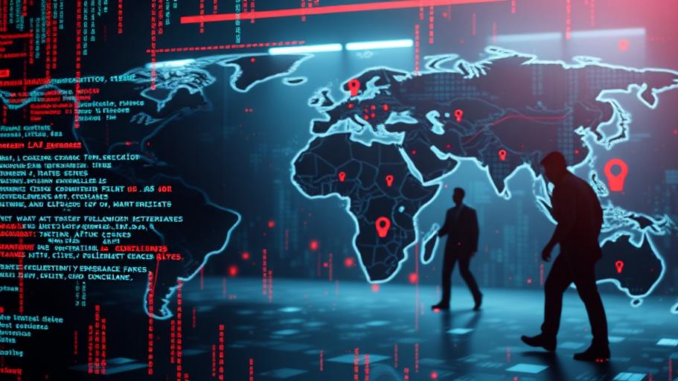
Summary
2024 witnessed a dramatic surge in ransomware attacks, impacting critical infrastructure and costing organizations millions. This article delves into the ten most significant ransomware incidents of the year, highlighting the evolving tactics of cybercriminals and the devastating consequences for victims. From healthcare providers to government agencies, no sector was immune to the growing threat of digital extortion.
Explore the data solution with built-in protection against ransomware TrueNAS.
Main Story
2024? Yeah, it’ll definitely go down as the year ransomware went absolutely wild. It wasn’t some small, up-and-coming threat anymore; it was full-blown, hitting businesses hard, disrupting essential services and, of course, demanding those hefty ransoms. It’s really shown how vulnerable organizations are, across the board from hospitals to government agencies.
Let’s dive into ten of the most impactful ransomware incidents of 2024, giving you, a glimpse into the scary world of cybercrime as it stands today.
-
Change Healthcare: This one was like a domino effect in healthcare. Hospitals and clinics got hit hard, services were disrupted, and, as if that wasn’t bad enough, they stole patient data. It showed, like, how interconnected these systems are, and how one attack can cause so much damage. Imagine the chaos, right?
-
Ascension: Another big healthcare provider getting nailed just reinforced that vulnerability, you know? It’s not like these places are small-time, they’re huge, well-resourced organizations and still get taken down. It makes you wonder about patient safety and data security.
-
City of Cleveland: This attack hit municipal services, pretty hard which really demonstrated how dangerous ransomware can be. When essential services are down, it’s not just about the money, it’s about public safety and well-being.
-
CDK Global: Now this attack hit a major automotive software provider, and dealerships everywhere felt it. It showed how ransomware can bring entire industries to their knees. A real wake up call for the automotive sector.
-
McLaren Health Care: Another health institution caught in the crosshairs. It just keeps happening, doesn’t it? More data breaches, more disruptions. Honestly, it’s a really disturbing trend, they really need to shore up their security.
-
LoanDepot: The financial sector is clearly a juicy target. This attack on a big mortgage lender just demonstrated the significant financial risks and the potential for real economic disruption if these institutions are taken offline.
-
Veolia: This attack hit a global environmental services company, they handle some pretty critical infrastructure too. When stuff like water and waste management are targeted, it’s a clear indication of how ransomware can seriously disrupt daily life and create massive challenges for everyone.
-
Blue Yonder: This one affected supply chains, which means it rippled out quickly to companies like Starbucks. It was a great example, a horrible example, of how connected supply chains are. And the potential for chaos when something goes wrong.
-
TfL Cyberattack: London’s transport system got hit. Payment systems and passenger services were down. When we’re talking about transport systems in big cities, like London, you can imagine how many people that impacted, how many lives were disrupted.
-
Lurie Children’s Hospital: This one was just… wrong. It showed the callousness of some of these attackers. Targeting a children’s hospital? It’s hard to comprehend. Really emphasizes that ransomware can directly affect some of the most vulnerable people in the world.
The sheer number of attacks is bad enough, but it’s the level of sophistication that’s really worrying. You’ve got double and triple extortion, which cranks up the pressure to pay those ransoms. And it’s not getting better with the rise of Ransomware-as-a-Service (RaaS), making it easier for wannabe hackers to get into the game. It’s a mess.
The trend of increasing ransomware isn’t slowing down. So, it’s vital that we, as a collective, prioritize cybersecurity. Organizations need to beef up their preventative measures, have solid incident response plans, and, most importantly, implement great backup and recovery strategies. This isn’t just about the tech; it’s a fight we need to tackle together. Businesses, governments, and just normal people. Everyone has a role to play in protecting our digital world. I think it’s more important than ever.


Given the wide range of sectors targeted, what common vulnerabilities are these cybercriminals exploiting to achieve such widespread success?
That’s a great question! It really highlights the issue of common weaknesses across various sectors. From what I’ve seen, things like unpatched software and phishing attacks seem to be consistently exploited. It makes you wonder how we can build more resilient systems across the board, right?
Editor: StorageTech.News
Thank you to our Sponsor Esdebe – https://esdebe.com
So, you’re saying the “sophistication” is worrying, but didn’t most of these attacks exploit known vulnerabilities? Isn’t that a failure of basic cyber hygiene rather than some new high-tech threat?
That’s a valid point! While the *methods* of extortion are becoming more complex (like triple extortion), you’re right that many initial breaches stem from unpatched vulnerabilities and human error. It really underscores the need for organizations to double down on fundamental security practices alongside preparing for advanced threats. Thanks for highlighting that important distinction!
Editor: StorageTech.News
Thank you to our Sponsor Esdebe – https://esdebe.com